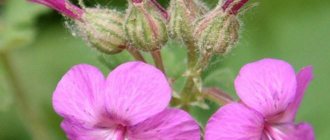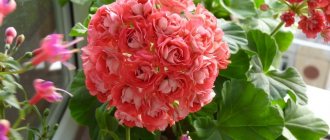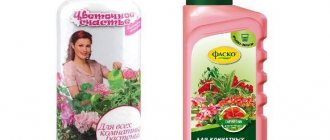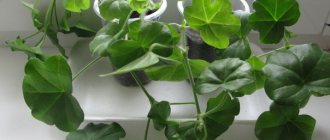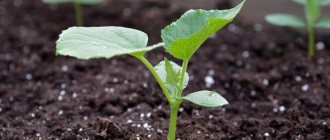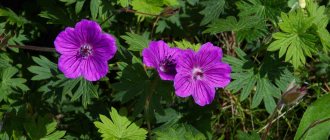Wild meadow geranium - what kind of flower
Crane grass, field geranium or wild meadow geranium belongs to the Geraniaceae family. This plant is used as a medicinal plant. It is also a honey plant. Latin name: Geranium pratense.
On a walk through the forest you can see meadow geranium
Forest and meadow geranium are similar species. Unlike meadow geranium, forest geranium is not a medicinal plant. The color of its petals can be pink, red, purple, blue.
This plant belongs to the genus Geranium, so it should not be confused with pelargonium, which belongs to a different species, but is part of the same family.
The extraordinary beauty of flowers is mesmerizing
Brief description of where it grows in the wild
Meadow geranium lives in temperate climates in all regions of Eurasia. It grows in steppe and dry meadows, in forest glades and forest edges. It can be found in deciduous, coniferous and mixed forests, near bushes. She often lives near fences and fences.
Wild geranium loves moist soil, but cannot tolerate either excessive dampness or temporary drought. This flower grows in soil that contains moderate amounts of minerals. Wild geranium is a light-loving plant. She does well in open spaces with good lighting. Shading and lack of sunlight depresses the flower and can destroy it.
Botanical characteristics and description:
- The plant has a thick and short (less than 10 cm) rhizome with bracts.
- The straight stems, about 30–80 cm high, branch at the top.
- Near the root there are wide carved leaves, divided into 7 lobes. The similar leaves on the stem are divided into 5 lobes, and the leaves near the inflorescence are divided into three lobes.
- The inflorescence is shaped like an umbrella. Many large flowers appear in each of them.
- The petals reach 2.3 mm in length and 17 in width.
- The flower consists of 5 wide rounded petals of blue, bluish, violet, lilac.
- All parts of the plant are covered with short soft hairs.
Wild meadow geranium blooms for 2 months: from late May to mid-July. By August or September the fruits ripen. This flower produces a lot of pollen and nectar.
Geranium pratense grows in meadows, forest edges and clearings
Medicinal properties and contraindications for use
From generation to generation, knowledge about such a useful plant as meadow geranium is passed on. The medicinal properties of this flower are very diverse:
- It has anti-inflammatory, astringent and antiseptic properties.
- Helps stop bleeding and numb a small wound.
- Dissolves stones in the kidneys and bladder.
- It is an anatoxin for snake venom.
A decoction or infusion of cranberry leaves, flowers, and roots is used for a number of diseases:
- bronchitis, tracheitis, other respiratory diseases;
- enteritis, colitis;
- food poisoning;
- dysentery;
- cancer;
- epilepsy;
- angina pectoris, tachycardia;
- rheumatism, gout;
- bone fractures;
- insomnia;
- angina;
- inflammation of the mucous membranes of the mouth and throat;
- fever;
- various bleedings;
- ulcers, abscesses, ulcers on the skin;
- fistulas
You should wash your hair with this decoction if you have severe hair loss.
Despite the variety of healing properties, meadow geranium has several contraindications. Preparations based on this plant cannot be used for certain diseases and conditions:
- thrombophlebitis;
- thrombosis;
- increased blood viscosity;
- gastritis;
- increased stomach acidity;
- intestinal atony;
- constipation;
- pregnancy.
The plant contains many flavonoids, vitamins, and tannins.
Varieties bred from meadow geranium
Garden geranium - how to plant outside
Based on meadow geranium, many ornamental varieties have been bred that can be grown in the garden, on a summer cottage, and in flower beds.
Purple Birdies
Bright purple, slightly curved petals give the flowers volume. Each flower grows from 5 to 15 petals. Geraniums of the Violet Birds variety grow large inflorescences of 3–5 buds each. Dark green leaves densely cover the tall stem. The size of the bush reaches 90–110 cm.
Purple birds bloom twice per season: in summer and autumn. At the end of June, the buds bloom, the plant blooms magnificently and profusely. Purple Birdies look great until late fall and winter.
Purple Birdies
Splish splash
The delicate white petals of the Splish Splash geranium are covered with blue streaks and large spots up to 4 cm in diameter. The plant, up to 70 cm high, has large flowers and wide openwork leaves with 5 lobes. In summer the leaves are green, but in autumn they take on an unusual color. Splish-splash blooms from June to August. An incredibly beautiful flower will decorate any garden all summer.
Perple gost
White petals with dark veins are a feature of the Purple Ghost species. The leaves and stem of this plant have a muted purple or brown tint. The height of the plant varies from 40 cm to 55 cm. The Purple Ghost variety has a very apt name: purple leaves combined with pale petals. The flower looks mysterious, enigmatic.
Laura
Delicate, double, white flowers of Laura geranium are covered with thin, almost imperceptible veins. Soft green openwork leaves grow on a stem up to 60 cm high. At first glance, this beautiful flower seems defenseless, but in fact it is strong, hardy, and unpretentious. It blooms from June to August, but retains its beauty until winter. These qualities allow this plant to be used in landscape design in a variety of ways.
Hocus Pocus
Bright blue and blue flowers are the special pride of geraniums of the Hocus Pocus species (in Latin, Hocus Pocus). This variety blooms in July and blooms until early autumn. Hocus Pocus has bright purple or dark purple leaves. The carved leaf grows up to 10 cm in length. They are covered with sharp teeth. The height of the plant reaches 60 cm. This bright, elegant flower will become a luxurious decoration for a flower bed or garden.
Hocus pocus
Is it possible to transplant meadow geranium to the site?
Meadow geranium will easily take root if you transplant it to your summer cottage. On moist soil rich in fertilizers, it will grow and decorate the garden with bright, delicate flowers that can be admired until autumn.
Is it possible to spray geraniums with water and how to water them correctly
You can replant wild geraniums in spring or early autumn. You need to dig up a small young seedling, preserving as much soil as possible. You cannot shake off the soil from the roots. First you need to prepare a place in the garden: loosen and fertilize the soil with compost, provide the necessary conditions for the plant. It grows quickly, so it needs a lot of space. Meadow geraniums should be replanted in damp soil and watered again after replanting.
Important! The flowerbed should be open to the sun and well lit. This flower needs regular watering.
Features of cultivation and care
Geranium pratense can be grown in a spacious place in greenhouses, greenhouses, greenhouses. The plant is unpretentious, so it does not require complex care. The most important thing is to provide it with an abundance of light and moisture.
The flower requires plenty of light
The soil must be fertile. It is necessary to arrange good drainage so that the moisture does not stagnate, otherwise the roots will rot. Every spring the soil is fed with fertilizer. It is necessary to protect meadow geranium from weeds and weed the flower bed. She does not need shelter for the winter.
Photo of a field plant
This is what wild geranium looks like in the photo.
Sources
- https://kursi-floristiki.ru/cvety/geran-lugovaya-foto.html
- https://PuteshestvievmirPrirodi.com/geran-lugovaya-lechebnye-svojstva-i-protivopokazaniya-lesnaya-geran-bolotnaya.html
- https://selo.guru/rastenievodstvo/derorativ/geran/vidy-ge/ulichnaya/lugovaya.html
- https://pocvetam.ru/sad/landshaft-i-dekor/geran-lugovaya.html
- https://stroy-podskazka.ru/geran/sorta/lugovaya/
- https://lesnoy-dar.ru/lesnye-travy/geran-lugovaya.html
Propagation of wild geraniums using cuttings, seeds or shoots
Blood red garden geranium
Wild geranium can be propagated by seeds, cuttings or shoots.
Seeds
Propagation by seeds is a labor-intensive method. They need to be soaked in gauze for several days. When the seeds hatch, they are transferred to cups with humus and sand. Place 3–5 sprouted seeds in each cup. Then the cups are covered with cellophane, placed in a sunny place, and watered regularly. When the sprouts sprout, remove the cellophane. After some time, strong shoots are transplanted into open ground.
Cuttings
It is much easier to propagate geraniums from cuttings or shoots. Cuttings are pruned in spring or autumn. Then you can choose the strongest ones from them. The cuttings are planted in a sunny area and the soil is fed with potassium fertilizers.
Geranium pratense can be propagated from cuttings
In the spring, you need to separate a small shoot from a healthy plant and place it in water. When the root sprouts, the shoot is planted in a warm, sunny bed.
Additional Information! Many gardeners prefer to divide an overgrown bush and plant its parts in a new location.
Rules of care
- Watering . Despite the loyal attitude of geranium to drought, it is advisable to monitor the watering of the plant and prevent stagnation of water in the soil.
Fertilizer . Every spring it is necessary to fertilize the soil, enriching it with minerals that have a beneficial effect on the growth and flowering of the plant.- Weeding . For effective and fruitful development, you need to rid the flower of its proximity to weeds.
- Trimming . After flowering and wilting, the flowers will need to be removed; the same should be done with dry stems to allow new shoots to grow and delight their owners with their appearance.
- Transplant . After 3-4 years, the geranium will occupy a fairly large area on the site; in early spring, the plant will need to be replanted, dividing it into several parts.
Similar care is necessary for indoor geraniums at home.
Growing problems, diseases and pests
Despite its resistance to adverse conditions, Geranium pratense is prone to various diseases. The root system can be affected by rot caused by a fungus. Then the geranium will be covered with a grayish coating.
The most dangerous fungus is Botrytis, which causes gray rot. Because of it, the stems become covered with brown spots. In addition, the plant can wither and become stained due to viruses. With all kinds of bacterial infections, the flower loses its leaves.
Important! Good care will help avoid illness.
A dangerous signal is swelling - bubbles on the stem and leaves. When the bubble bursts, the accumulated liquid flows out. A brown spot remains on the sore spot, the plant turns yellow and dries out. Swelling most often occurs due to excessive moisture and low temperature. These factors provoke the proliferation of fungus, bacteria and viruses.
Dangerous pests include whiteflies, aphids and spider mites. For treatment, you need to prepare an aspirin solution by dissolving 1 tablet in 8 liters of water. The affected plant is first washed with this solution and then treated with insecticides.
Meadow geranium is a charming wild-growing beauty that will easily take root in a summer cottage.
Chemical composition
Meadow geranium contains ascorbic acid, carotene, a fairly large amount of tannins, and essential oil.
The roots of the plant contain tannins, saponins, phenol carbonic acids, flavonoids, and carbohydrates.
The above-ground part of meadow geranium contains carbohydrates, vitamins, carotene, and tannins.

